Felipe Garcia-Sanchez
High-Speed CMOS-Free Purely Spintronic Asynchronous Recurrent Neural Network
Jul 05, 2021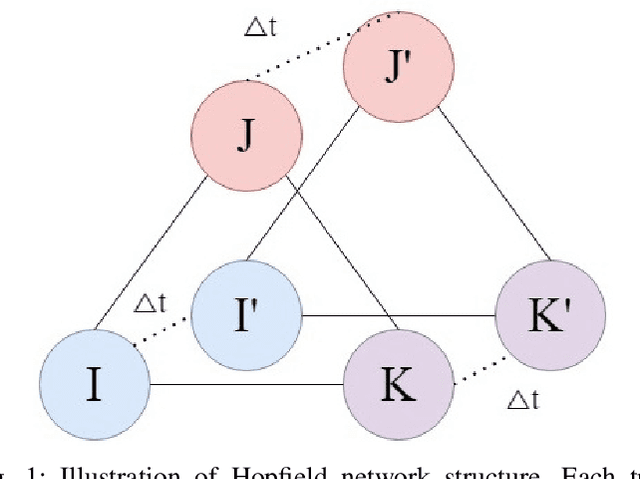
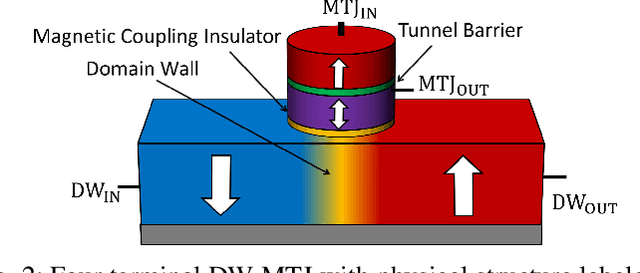
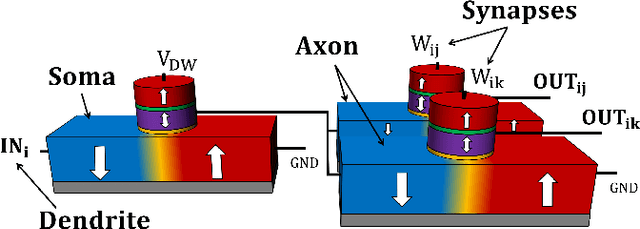
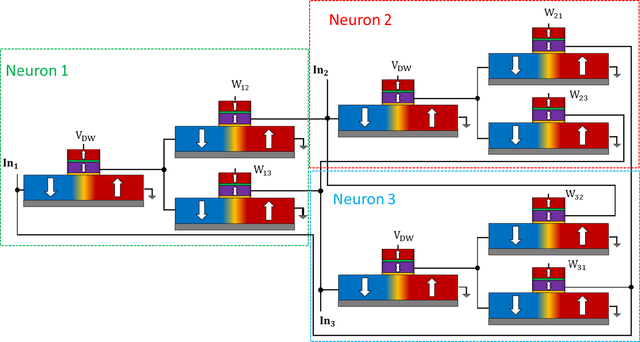
Abstract:Neuromorphic computing systems overcome the limitations of traditional von Neumann computing architectures. These computing systems can be further improved upon by using emerging technologies that are more efficient than CMOS for neural computation. Recent research has demonstrated memristors and spintronic devices in various neural network designs boost efficiency and speed. This paper presents a biologically inspired fully spintronic neuron used in a fully spintronic Hopfield RNN. The network is used to solve tasks, and the results are compared against those of current Hopfield neuromorphic architectures which use emerging technologies.
Domain Wall Leaky Integrate-and-Fire Neurons with Shape-Based Configurable Activation Functions
Nov 11, 2020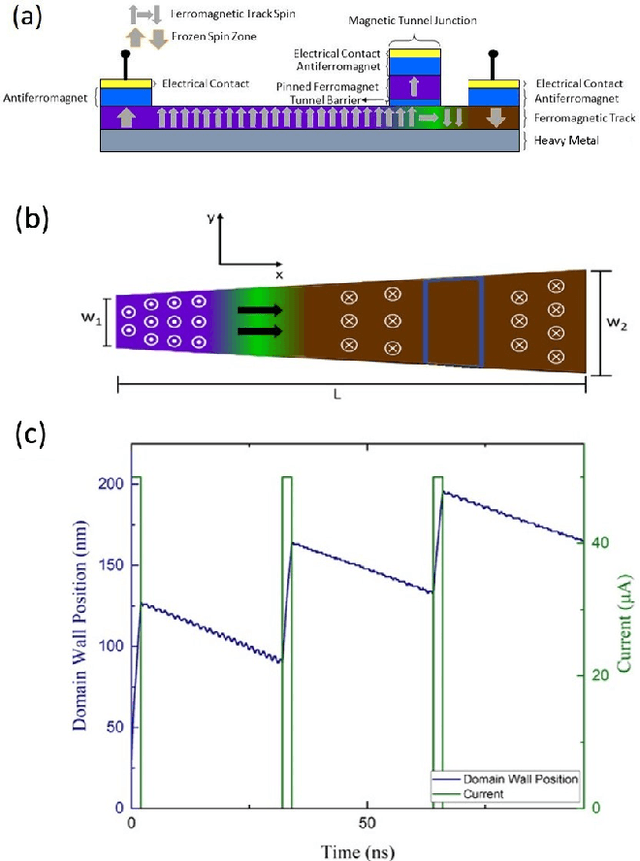
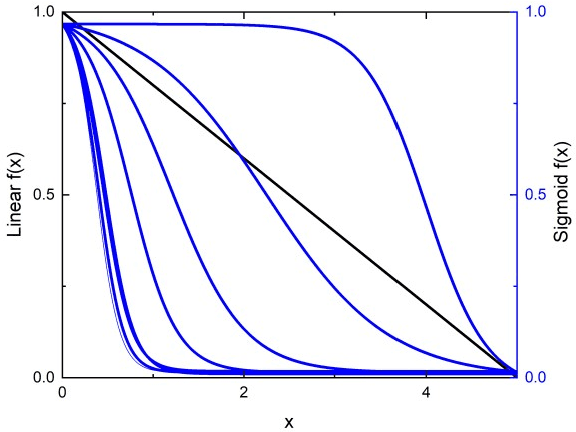
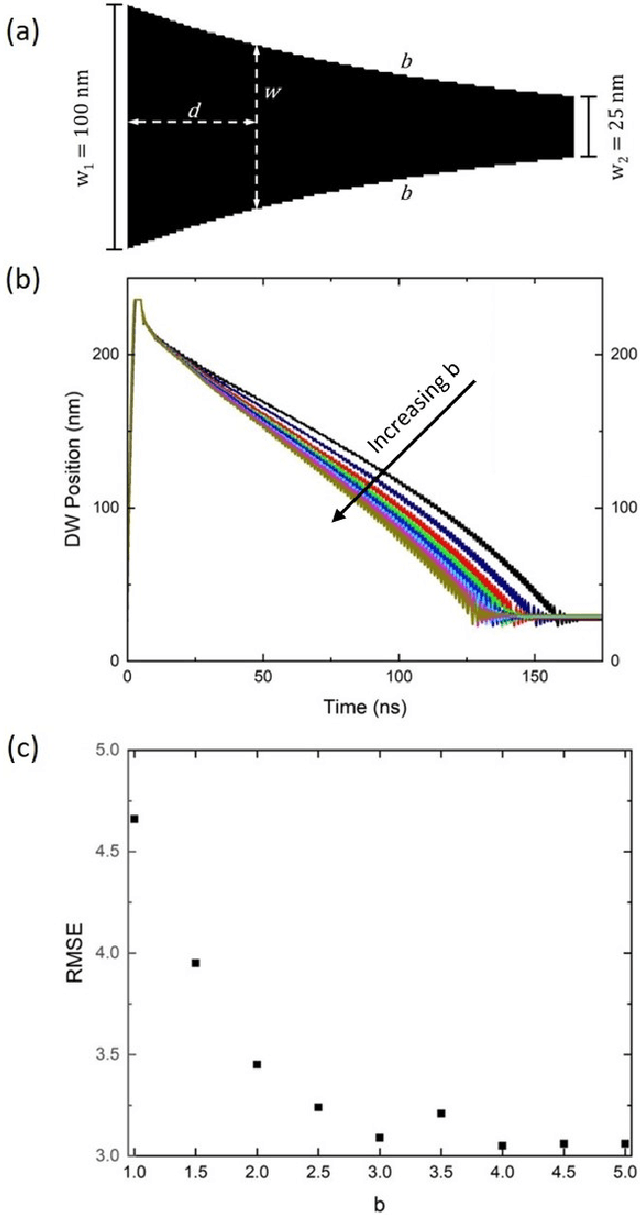
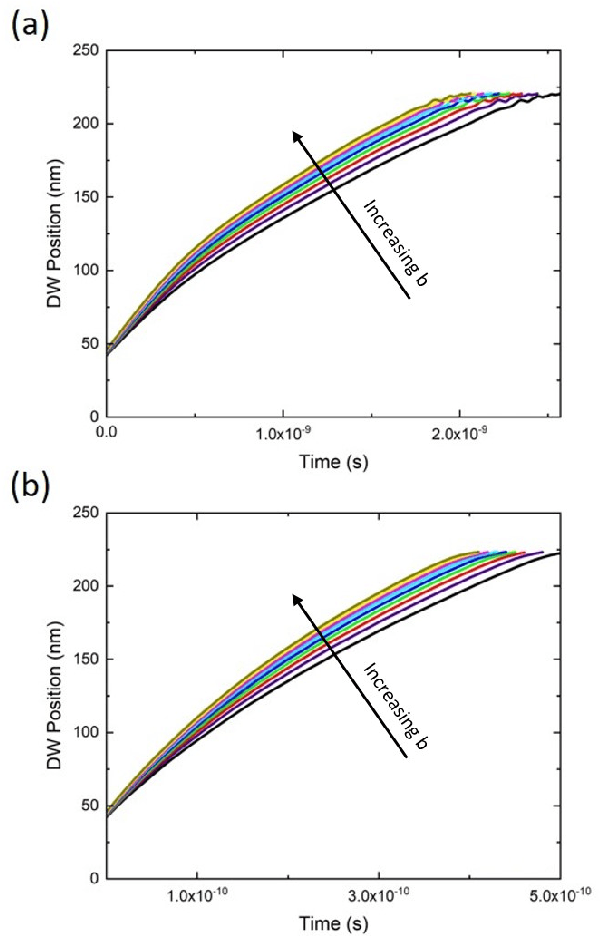
Abstract:Complementary metal oxide semiconductor (CMOS) devices display volatile characteristics, and are not well suited for analog applications such as neuromorphic computing. Spintronic devices, on the other hand, exhibit both non-volatile and analog features, which are well-suited to neuromorphic computing. Consequently, these novel devices are at the forefront of beyond-CMOS artificial intelligence applications. However, a large quantity of these artificial neuromorphic devices still require the use of CMOS, which decreases the efficiency of the system. To resolve this, we have previously proposed a number of artificial neurons and synapses that do not require CMOS for operation. Although these devices are a significant improvement over previous renditions, their ability to enable neural network learning and recognition is limited by their intrinsic activation functions. This work proposes modifications to these spintronic neurons that enable configuration of the activation functions through control of the shape of a magnetic domain wall track. Linear and sigmoidal activation functions are demonstrated in this work, which can be extended through a similar approach to enable a wide variety of activation functions.
CMOS-Free Multilayer Perceptron Enabled by Four-Terminal MTJ Device
Feb 03, 2020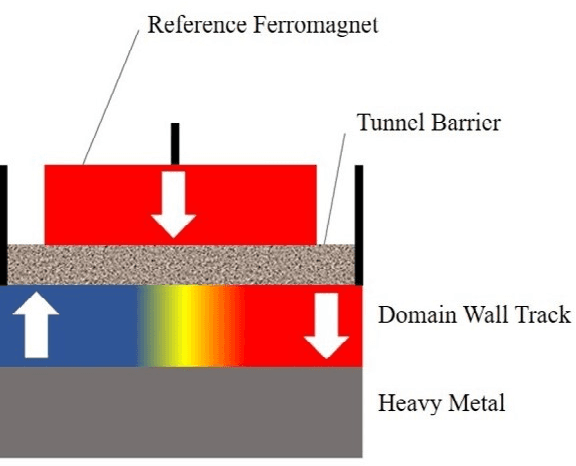
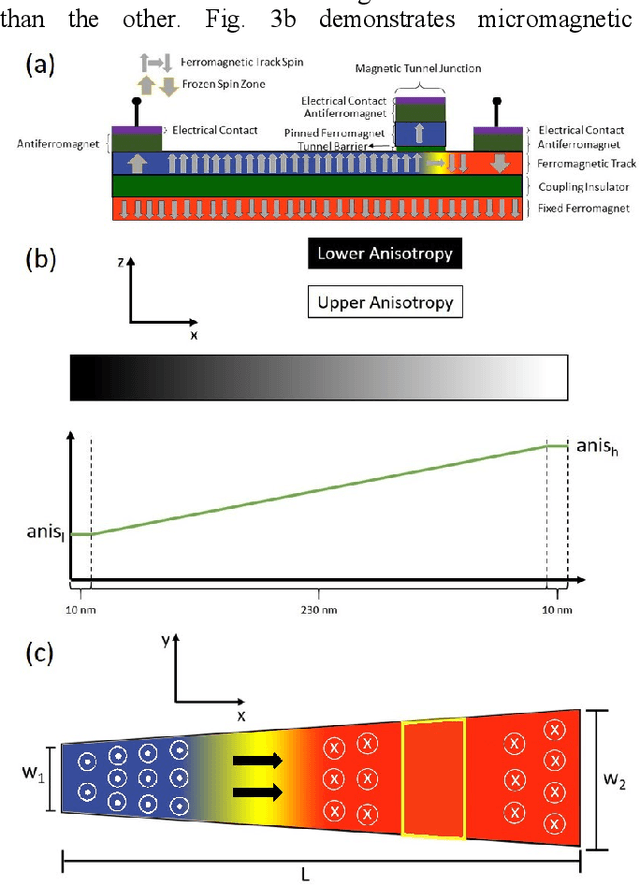


Abstract:Neuromorphic computing promises revolutionary improvements over conventional systems for applications that process unstructured information. To fully realize this potential, neuromorphic systems should exploit the biomimetic behavior of emerging nanodevices. In particular, exceptional opportunities are provided by the non-volatility and analog capabilities of spintronic devices. While spintronic devices have previously been proposed that emulate neurons and synapses, complementary metal-oxide-semiconductor (CMOS) devices are required to implement multilayer spintronic perceptron crossbars. This work therefore proposes a new spintronic neuron that enables purely spintronic multilayer perceptrons, eliminating the need for CMOS circuitry and simplifying fabrication.
 Add to Chrome
Add to Chrome Add to Firefox
Add to Firefox Add to Edge
Add to Edge